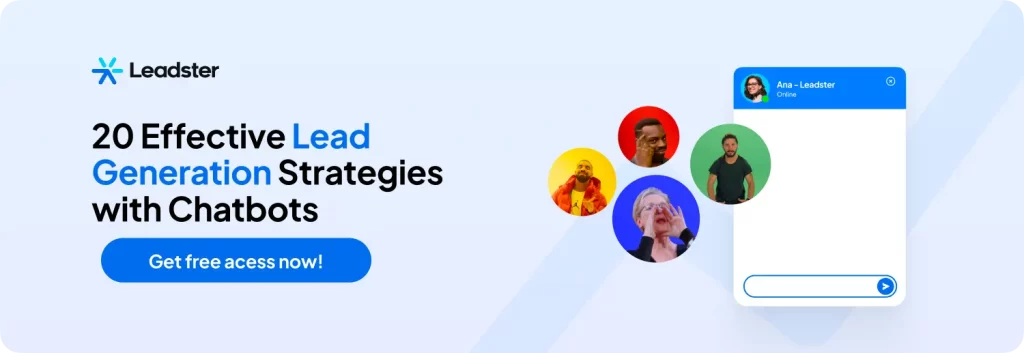Customer Pain Points: 20 Questions to Identify and Tips to Solve
Trying to sell to someone who isn’t ready to buy can be highly frustrating for the sales team and cause significant losses in sales efforts.
Identifying your ideal customer’s pain points is key to creating effective sales and communication strategies. This way, your company can offer solutions that align with each pain point identified.
The dedication of your team in understanding the main pain points will determine the success of sales. The more accurate the communication, the less effort is needed to convert visitors into customers.
What is a Customer Pain Point?

A customer pain point can be defined as a challenge or problem faced by your ideal customer.
In other words, the pain point is usually the reason why they seek out your product or service.
These pain points may be specific issues, but the process of identifying them can be quite complex.
The complexity arises from the fact that there may be many problems and pain points in your target audience, but it’s essential to understand which ones you can help solve with your product or service.
Additionally, it’s common for consumers not to be ready to recognize or clearly express their pain points.
In such cases, it’s necessary to create tests through communication channels to understand how your audience responds to stimuli.
In the B2B market, one way to identify these pain points is by approaching potential clients through a consultation.
This allows you to immediately address the expectations of your future client by offering a solution to the problem their company is facing.
The Importance of Understanding the Customer’s pain Point in your Sales and Marketing Strategy
Identifying your customer’s pain point is not only useful for sales strategies and marketing and communication actions but can also impact your entire company.
This means that this information about your target audience is extremely valuable and has the power to radically change your business.
Seth Godin, a marketing guru and founder of Yoyodyne, one of the pioneering companies in digital marketing, says:
“Don’t find customers for your product – find products for your customers.”
He means that if you know your audience deeply, you will adapt to their needs.
It’s no use trying to offer a product or service you consider innovative if it doesn’t solve a specific problem for your customer.
Therefore, selling something revolutionary isn’t enough.
It’s crucial to create something that offers real value to consumers and provides a solution that will make your customer’s life easier.
In other words, sell a product or service that addresses a specific pain point your ideal customer has.
Understanding your ideal customer’s key pain points is essential for providing a satisfying experience for your buyer.
With this diagnosis, you can understand more about the world in which this person lives, the reality they face, and the problems they encounter daily.
It then becomes much easier to provide solutions to solve these problems.
To ensure long-term visions for your business, it’s necessary to develop planning at the tactical, strategic, and operational levels.
If the planning is inconsistent, you risk losing investments and failing to meet the set goals.
This planning must incorporate pain points so that the problems faced by your target audience are considered before any approach.
It is essential to be clear that your product or service is something your ideal customer needs and/or is looking for at that moment.
Types and Examples of Pain points Related to Businesses

If your potential customers say they are facing issues like employee dissatisfaction and retention problems that are affecting productivity and hiring, customer turnover that impacts revenue, or a severe lack of leads preventing them from meeting revenue targets, you have identified business-related pain points.
Pain is the first thing the sales team looks for in potential customers.
That’s because pain is the point that triggers the beginning of the buying journey and indicates the urgency of finding a solution.
These are some of the most common types of problems or challenges related to businesses that your potential customers may face.
We’ve provided examples to help you identify them in practice:
Positioning Pain Point
All companies seek improvement; that’s a fact.
However, the goal of selling more and better is easier to write on a target board than to achieve in practice.
Companies believe—or think they believe—that they understand what’s hindering efforts for clear positioning and hampering marketing investments.
But do you really know what’s preventing your client’s business from growing?
Here are some questions to reflect on whether or not this is happening in your client’s business.
These examples may provide insights related to positioning and help you identify some problems that may be occurring in your prospect’s business.
“No one knows who our company is.”
“Our competitors are outperforming us.”
“The market is changing too quickly, and we’re falling behind.”
“We haven’t considered investing in digital marketing until now.”
“Our competitors have more presence in communication channels than we do.”
As lead generation is closely tied to revenue, being able to identify a positioning pain point and propose a solution is a great way to prove value to your ideal client.
Financial Pain Point
Money is a crucial topic in business.
Many company pain points stem from a lack of funds but could be easily resolved if costs were reduced and revenue increased.
It’s evident that any company will grow if its financial situation improves.
Here are some examples of critical financial pain points that require precise solutions:
“We’re not generating enough profit to sustain operations.”
“Revenue is high, but profit is low.”
“We don’t have a clear view of our current financial status to know if we’re making the right financial decisions.”
“Maybe we’re overspending on tools, equipment, and software, but we don’t know exactly what to cut to reduce costs.”
If your product or service can help companies that want to reduce expenses or better manage cash flow, it’s crucial to be attentive to these pain points to understand how your business can help solve them.
Human Resources pPain Point
Employees are at the core of any business because without people committed to the work, a company cannot be healthy.
If there are issues related to human resources, it can affect other areas of the business:
“Employee satisfaction levels are low.”
“Our lack of diversity leads to a lack of innovation.”
“It’s hard to trust our managers to train and motivate other employees.”
“The truth is that the current culture in our company doesn’t align with what we believe in and promote.”
If your product or service helps organizations manage, motivate, and improve employee lives, you will relieve the pressure on those at the top.
Thus, paying attention to these issues is vital if your offer relates to people management.
Process Pain Point
With human resources problems come operational problems (or vice versa).
Your potential customers know that the best way to succeed in business is by implementing internal processes that truly work.
The question is: “how?”
They may be facing obstacles such as:
“Our hiring process is quite complicated; it’s difficult to find truly qualified candidates.”
“Our customer churn rate is high because our post-sales department is overwhelmed and can’t keep up with demands.”
“We don’t have any specific process or system for qualifying leads.”
“The workflow is inconsistent. Each employee does things differently, resulting in disorganization and variable performance.”
“Our software is outdated, but we’re afraid the transition to a new one will be difficult.”
If you discover internal process pain points, ask your potential customer to imagine how their company or department would function smoothly and what difference that would make in their daily operations and overall results.
Productivity Pain Point
It’s a manager’s job to remove obstacles within the team so that things can be done in the best way possible, keeping productivity high and meeting goals.
That said, it’s easy to stumble over the roadblocks that appear in a company’s path and fall victim to inefficiencies that waste a lot of time.
Here are some examples of productivity pain points in businesses:
“We keep missing client deadlines.”
“We spend too much time in meetings.”
“Our administrative work is out of control.”
“Quality issues with our product/service have led to a loss of customers.”
“Our employees do not have enough support to complete their assigned tasks.”
If there is anything preventing a company and its employees from working efficiently, you can present your solution as a way to save time and money.
If your product or service directly impacts productivity, you should observe the daily operations of teams and employees to identify potential gaps that consume much more time than necessary.
Pain Points for Small Business Owners
When working in a small business, challenges that are not quickly resolved can completely disrupt operations.
If your client is a small or micro-business, you need to ask questions that address the millions of tasks a lean team must complete.
Common pain points for small businesses may include:
“Orders are being delayed, and our team is already overwhelmed with other tasks. We are unable to keep up with the demand.”
“Recruiting qualified professionals suited for our business is not an easy task.”
“Maintaining a high frequency of posts on our social media is practically impossible.”
“In my business, managing the team is really challenging because I already have a thousand other things to solve, and I can’t do everything with excellence.”
“Tracking the company’s growth metrics is getting harder every day.”
Many of these problems can be solved with a product or service offering based on current technologies and/or consulting services.
Small businesses can benefit from workflow automation and proper guidance from experienced professionals.
Pain Point for Support
Often, customers are not receiving adequate support, especially at critical stages of the customer journey or sales process.
It is possible that your potential client has gaps in their support system and needs to improve this process.
An example of a support pain point could be customers not knowing who to reach out to when they have a question.
Or perhaps they contact the company for clarification but do not receive a response.
Some examples of how to identify these issues:
“We are taking too long to respond to customers, and we are unable to provide service to everyone who contacts us.”
“We don’t have a dedicated customer support team.”
“We can’t reply to all the messages we receive on our social media channels.”
Identifying the challenges your prospect is facing regarding their company’s points of contact will help you position your solution and tailor your offer to their needs.
Pain Point for E-commerce
Some issues occur exclusively in the digital business environment.
If your prospect has an e-commerce business, you can investigate if some of the most common challenges are happening within their company:
- Incorrect order fulfillment. Sending the wrong order to another customer can cause unnecessary headaches. According to research by Voxware, 54% of consumers who shop online choose to return the product and request a refund if the order is incorrect.
- Limited payment options. The wide variety of products in the virtual store may attract potential buyers, but they might not necessarily purchase due to limited payment options. Nowadays, payment options are no longer limited to just credit cards, PayPal, or bank transfers.
- Slow checkout process. Even if customers find what they are looking for in the online store, a complicated checkout process may drive them to abandon their purchase and leave items in their cart.
- Weak website design. Designing the e-commerce site can be considered one of the main examples of business pain points. The design of the interface will be crucial when the buyer decides whether to continue browsing the page or leave it. Every potential buyer constantly judges the overall appearance of the site, and the margin for error is minimal.
If your product or service is connected to technology and digital businesses, it is essential to analyze the main pain points related to the e-commerce world.
We have listed the most common ones, but it is worth conducting a deeper investigation if your prospects operate through an online store.

How to Identify Customer Pain Points?

Now that we understand what pain points are and some examples of them, we need to know how to identify them in practice.
Here’s what you can do:
Conducting Quantitative Research
Quantitative research generates concrete data and numerical information based on standardized questions.
When planning a survey, it’s better to create a questionnaire with few, but very objective and relevant questions that will provide you and your team with high-quality information.
For example, let’s say you ask: “How often do you use our product or service?”
Good multiple-choice answers to include would be “once a week,” “once a month,” “every few months,” “rarely.”
Opt for multiple-choice answers to make it easier to tally the responses, as this generates quantitative data for analysis.
Conducting Customer Interviews
Unlike quantitative research, qualitative research generates detailed responses based on open-ended questions.
A qualitative interview allows for a deeper dive into issues.
When talking to a prospect, the key is to ask the right questions.
Avoid yes or no questions – this will only give you a narrow, limited view of your potential customer’s problems.
The best way to discover business-related pain points is to get the prospect talking.
And what’s the best way to do that?
Use the 5 Whys Technique
The best way to gather valuable information is to ask questions that require a detailed explanation.
A suggestion when creating a script for an interview is to apply the 5-why technique.
The main goal is to find the exact reason causing a specific problem by asking a series of questions.
The 5 Whys technique in action.
Simply ask “why” for each reason your potential customer presents.
Conducting Interviews with Sales and Customer Service Teams
Your customer service and sales teams are on the front lines of your company, interacting with customers every day.
This makes them invaluable sources of information when it comes to customer pain points.
However, it is important that your employees understand the difference between their own pain points and those of the customer.
For example, if your system isn’t working properly, that may be something they want to communicate, but it’s not the focus of this exercise, so be sure to separate things properly when interviewing them.
The team might receive customer feedback like “I liked your product when I bought it last time, but it’s too expensive without a discount, so I chose a different company this time.”
Or “I was surprised to see an extra charge added at checkout that I wasn’t expecting, so I don’t want to buy from you again.”
These would be examples of financial pain points, and this feedback can highlight an area of your business that needs improvement.
Reading Reviews and Customer Feedback Online
Reviews and feedback help you see exactly what your customers are saying about your brand, products, or services.
When searching the web, it’s essential to see what they’re saying on review sites and social media.
Conducting a thorough investigation of reviews can help you see which problems your customers have solved with your product or service, and which issues or pain points they still have.
Some review sites offer pros and cons that allow you to immediately identify how your product or service met your customers’ needs.
It’s also worth conducting the same analysis regarding your competitors, to understand the type of pain they solve (or don’t) for the customer and how they communicate this in the market.
Tracking Mentions and Comments on Social Media
Analyzing reviews and feedback on the internet isn’t enough to get a full view of your digital reputation.
We suggest including a review of comments on social media in your research, not only on your own channels but also on your competitors’ channels.
This way, you can get a comprehensive view of your market and also understand what your target audience thinks and believes.
A practical example of this is following what’s being discussed through hashtags on Twitter.
Compiling Knowledge into a Content Library
Once you have gathered all the information about your ideal customer through research, create a library with all this content.
You can then use all this data to create specific articles that help educate your potential customer at different stages of their consumer journey.
We suggest using Google Analytics to discover the most popular posts and the articles where people tend to spend more time.
This provides even more insights about your customers so that you can ensure visitors see the most relevant and important content for them.
Questions to Discover the Customer’s Pain Points

In a qualitative interview, or even during a call or sales meeting with a lead, there are several questions that can be asked to help identify the customer’s pain points.
Here are some of them:
- What problems are you trying to solve with our product or service?
- Are there ways to improve our product or service?
- Are there ways to improve your sales journey?
- What is preventing you from using our product or service?
- What are the challenges of your business?
- What are your company’s priorities?
- What processes in your company are you still doing, but know you should stop as soon as possible?
- Can you describe your customer’s buying journey?
- What prevents you from achieving your growth goals?
- How is your performance measured?
- What is the reason for your concerns?
- What aspects of your work do you not enjoy as much?
- How much time do you spend finishing certain tasks?
- What do you want and not want in your company’s solutions?
- What would you change about your job or company?
- What are your growth strategies?
- What is the approval process like in your company?
- What is the slowest part of your process?
- How is the economic landscape affecting your company’s budget?
- Where are the main problems in your operation?
- Are you constantly switching between different software to complete simple tasks?
- Are your sales and marketing teams working towards the same goal or heading in different directions?
- Are certain issues continuously coming up in company meetings because they haven’t been resolved?
8 Steps to Help Solve your Customer’s Pain Points
After identifying the pain point, you can determine the best way to help your potential customer solve it.
Recognizing the pain and presenting a solution for it, instead of simply presenting your product or service, can be the key to boosting your sales.
Here are eight tips to start positioning yourself in this way:
1. Show your Customers that you Recognize and Understand their Pain Points
Present your solution in a way that matches their specific problems.
Remember to use specific terms or phrases they mentioned to describe their pain points.
Reformulate and incorporate them into your offer.
This not only shows that you were listening but also makes the entire pitch much more personal (an essential element in a sales pitch).
2. Present Common pain Points that Require less Effort to Solve
By emphasizing these pain points and demonstrating how life will be easier once these issues are resolved, you open a door and a new perspective that will motivate your future customer to act quickly to find a solution.
3. Use your Audience’s Language when Discussing their Problems and Pain Points
This is a psychological technique that can greatly help in building trust with your potential customer.
Instead of using internal terms that only your colleagues would understand, try to show your customer that you understand their company’s reality by using language and terminology aligned with that.
4. Bring Clarity and Transparency
Clear communication is essential to gaining your customer’s trust.
Be transparent from the beginning and avoid “unpleasant surprises” when making your offer.
5. Find out who is Responsible for Solving the Problem
Try to find the buyer as soon as possible to present an assertive approach and avoid wasting time and money.
Ask your customer who makes the buying decision and which teams need to be involved in that decision.
Influencers are important in the process, but it doesn’t make sense to spend hours negotiating with someone who doesn’t have the power to close a deal.
6. Identify which Teams will use Your Product or Service on a Daily Basis
If you are selling a product or service that will be used by more than one team, try to find out which team has the most priority.
Customers sometimes worry that they will seem less authoritative if they say they are not the sole decision-maker, so we suggest using the following questions to avoid that impression:
- Who else besides you needs to be involved in this decision?
- Who else would like to know that we had this conversation?
7. Present your Offer in a Way that Reflects the Customer’s Pain Point
As you build trust with the prospect and hear different perspectives, you need to tailor the solution to their specific needs.
Listen and confirm the potential customer’s pain points while asking for information, and it will be easier to ensure that your pitch meets the requirements of all their issues.
8. Share your Solutions Through Customer Testimonials and Success Stories
If you’re confident that your product or service can solve your potential customer’s pain points, the next step is to show them.
This is where customer testimonials and your top success stories come into play.
You are giving your potential customers the chance to hear from real people.
Our tip here is to make these cases as “real-life” as possible.
Using Customer Pain Points in Digital Marketing Strategies

Once you have identified the main pain points of your potential customer and incorporated them into your sales pitch, you can also apply them to your digital marketing campaign communications.
How to Address Customer Pain Points in Ads
You can address pain points in the headlines of paid search ads on major search engines, or even in sponsored posts on social media.
This ad from Elementor, a website-building software, is a good example:
It addresses common pain points for users who need to create a website but have little experience in the area by offering a solution that combines creation and hosting (usually sold as separate services) for a fixed price.
The “clean” design of the ads and the phrase “Quickly create a WordPress site” also make it seem very simple to create a site using the tool.
How to Address Customer Pain Points on Landing Pages
Websites and landing pages are ideal spaces to work with arguments related to customer pain points.
In this example from the Recurso para Multas site, we can see several moments where this approach was used:
The main headline of the page addresses perhaps the main pain point of a driver who receives a fine: the possibility of having their license suspended and losing the right to drive.
The chatbot is also used in this case to explore other pain points: the concern about being charged for an evaluation (the message already informs that the evaluation will be free) and the urgency to get a response (the visitor already knows that the evaluation will be done in about 5 minutes).
How to Address Customer Pain Points in Content and SEO
Professionals working with SEO and content marketing are often experts in addressing customer pain points.
Using the right keywords and producing quality content can create a connection with potential customers, boosting the results of marketing efforts.
Conclusion
Your ability to identify and solve your customer’s pain points is crucial to the success of your sales.
Understand that even though your customers’ pain points may be very similar, there is no one-size-fits-all solution for resolving them. The most important thing here is to listen and then personalize your solution—or your sales pitch—for each customer.
Don’t forget the importance of alignment between sales and marketing teams—share research, data, and insights with everyone involved in the process to create synergy across all areas.
As a goodbye (and thanks for reading!) check out our 14 day trial today. No credit card required.








